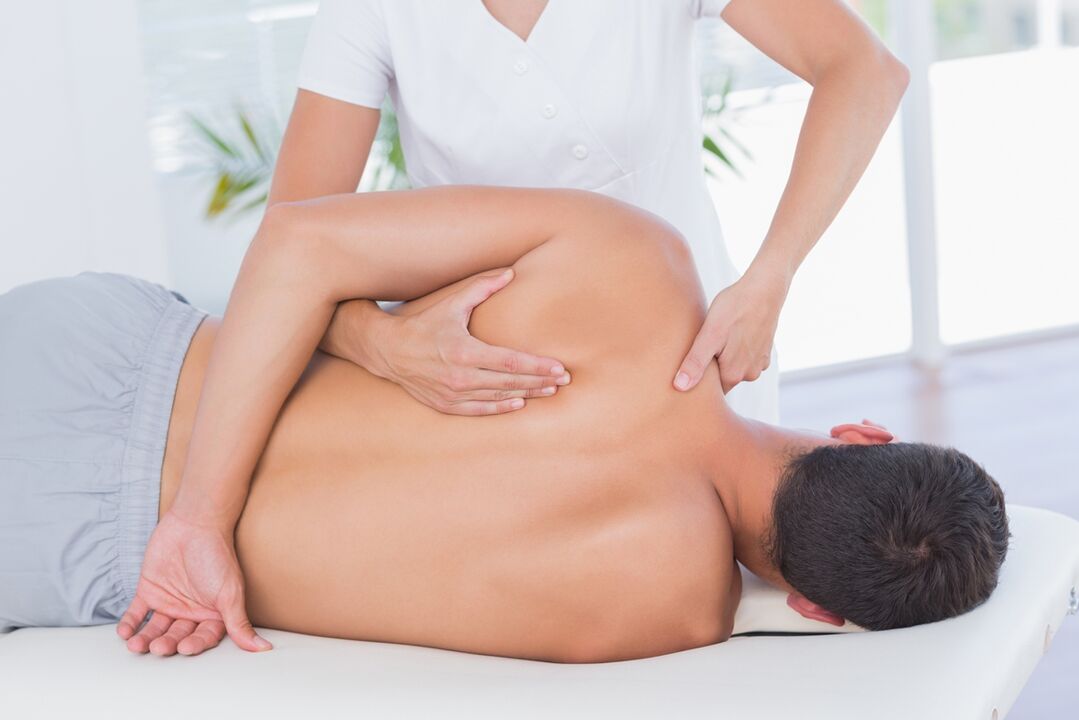Pain under the left scapula in the back is a symptom that occurs in both older and younger people. Muscle tension after physical exertion or chronic bending can cause discomfort. The concentration of back pain behind indicates not only diseases of the musculoskeletal system: problems with the organs of the chest and abdominal cavity are possible. If discomfort under the scapula on the left side increases, it is necessary to consult a specialist.

Anatomical features
The scapula is closely connected to the clavicle, forming the clavicle-scapular joint. On several sides, the costal arches and vertebral axis are connected to the shoulder blades. The bony formations listed maintain the shape of the chest and back.
The lungs and heart are at the level of the thoracic segment of the spine. Problems with these organs can cause pain. In addition, discomfort occurs due to pinching the nerve roots of the spinal cord, located in the spinal canal (near the shoulder blades).
Causes of discomfort in the scapula area
There are 5 main groups of pain causes that occur:
How to get rid of pain in the left side of the back under the scapula
If the diagnosis has already been confirmed by the doctor (osteochondrosis or chronic pancreatitis), it is necessary to follow the above recommendations.
Acute musculoskeletal disorders require the use of analgesics and anti-inflammatory drugs. Care must be taken when using warming ointments: apply the medicine strictly on the scapular region, without affecting the projection of the heart. Otherwise, you could cause a rapid heart attack and a break in your rhythm.
In chronic pancreatitis or peptic ulcer, a special diet is required, with the use of enzymes or antiulcer according to the regimen.
Any discomfort forces him to reduce physical activity: the patient is at rest. For sleeping, the choice of an orthopedic pillow and mattress is recommended.
Important! If pain under the left shoulder blade persists with the change in body position and does not subside at rest, you should urgently see a doctor to rule out acute myocardial infarction.
possible diseases
The list of diseases accompanied by pain symptoms:
Diagnosis
Western medicine uses hardware diagnostics to rule out musculoskeletal system problems. To make a final diagnosis, the patient must undergo:
- Cervical and thoracic spine radiography.
- Ultrasound for bursitis shows excess fluid in the capsule of the synovial joint.
- Computed tomography.
- Magnetic resonance imaging.
If myositis is suspected in a patient, a detailed blood test is needed to confirm the inflammatory process.
If cardiac pathology is suspected, allopaths perform the following examination methods:
- Electrocardiogram.
- A blood test that determines myocyte necrosis factors.
- Ultrasound of the heart.
Treatment and prevention of diseases
Therapies and dosages vary according to the form of the disease and its severity.
- The pathology of the musculoskeletal system requires the appointment of nonsteroidal anti-inflammatory drugs (for pain relief), muscle relaxants, vitamin complexes. In difficult clinical cases, Western doctors recommend eliminating the pain syndrome with hormonal agents. Minimally invasive shoulder surgery is often used to treat bursitis.
- Myositis is treated with anti-inflammatory warming gels and ointments. Physical therapy is recommended in remission. With severe pain, allopaths block novocaine.
- Angina attacks are stopped by nitrate-like compounds. According to medical protocols, patients need injections of blood-thinning medications to prevent blood clots from forming. With high blood pressure, patients take antihypertensive pills. To normalize the rhythm, doctors prescribe antiarrhythmics. They also recommend taking cholesterol-lowering medications, metabolic therapy.































